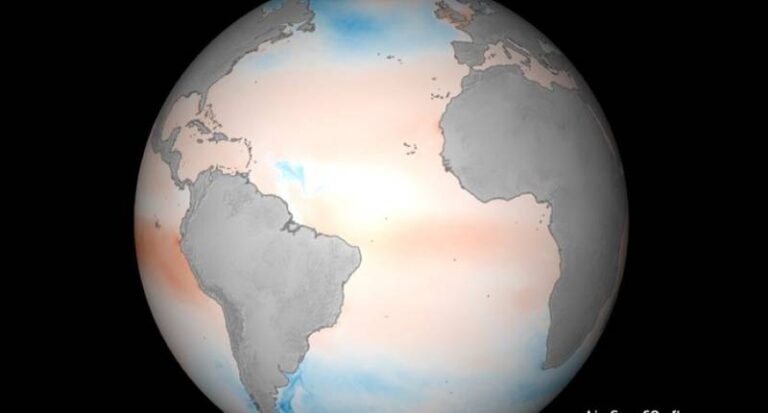A Breakthrough in Mapping the Ocean Carbon Sink
A new satellite-based product can now map the ocean carbon sink at unprecedented resolution.
Although the oceanic sink for the human-induced carbon dioxide reduces global warming, there are significant biogeochemical consequences. This uptake leads to a reduction in seawater pH and alters the carbonate chemistry of the ocean. These changes in ocean chemistry, often collectively referred to as ocean acidification, impact marine organisms and alter marine ecosystems.
Understanding Short-Term Variability
Scientists have made progress in understanding how the global ocean carbon sink changes over seasons and decades. However, the short-term variability is still not well understood. Most global datasets currently used to study the ocean carbon sink only provide monthly data and have a resolution of about 100 by 100 kilometers. This limited temporal and spatial resolution makes it difficult to capture the finer, more dynamic changes governing the ocean sink.
The OceanSODA-ETHZ Product
Nicolas Gruber, from the ETH Zurich University in Switzerland, led the development of a new version of the OceanSODA-ETHZ product. This global, gridded dataset of surface ocean carbon dioxide and the ocean carbonate system is designed for studying the ocean carbon sink and ocean acidification over seasonal to decadal timescales.
The new version maps the parameters of the ocean carbon system every eight days at a resolution of about 25 by 25 kilometers, more than 30 times finer than previous products. Satellite data is a critical part of the approach, providing detailed information to interpolate the measurements in time and space.
Visualizing the Data
An animation shows differences in the exchange of carbon dioxide between the air and the sea, capturing the period encompassing numerous hurricanes in the Atlantic ocean. Blue regions indicate carbon dioxide uptake by the ocean, while red regions show where carbon dioxide is being released to the atmosphere. Wind arrows depict surface ocean currents.
Professor Jamie Shutler, from the University of Exeter’s Department of Earth and Environmental Science, highlighted the dataset’s fine detail in understanding events like hurricanes, which can cause sudden spikes or changes in surface ocean carbon dioxide levels.
Implications for Climate Change
By capturing small-scale changes, this new product opens up opportunities to study how the ocean absorbs carbon and how this process might change in the future against the backdrop of climate change. Understanding the ocean carbon sink at this resolution can provide valuable insights into marine ecosystems and global carbon cycling.

